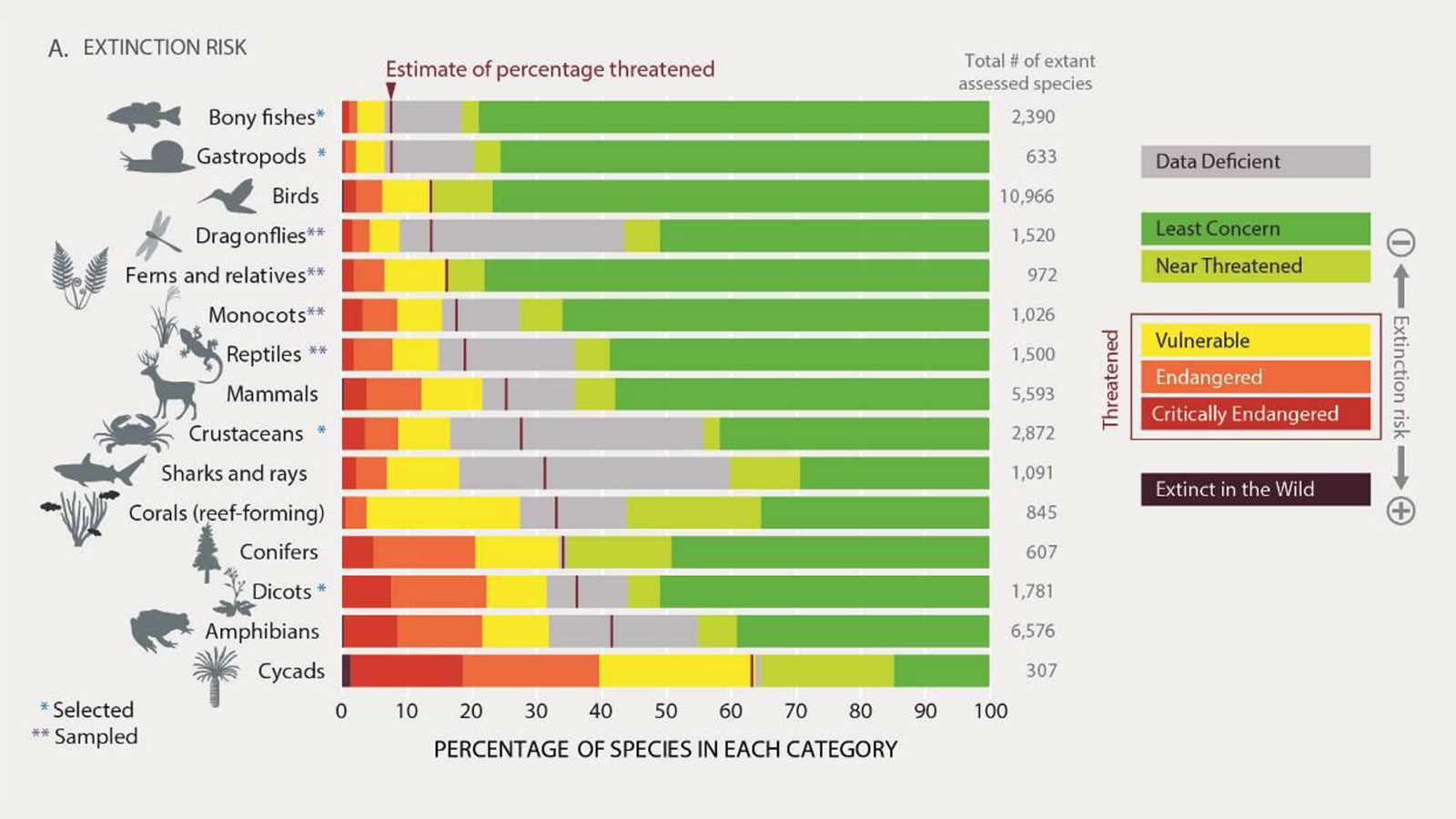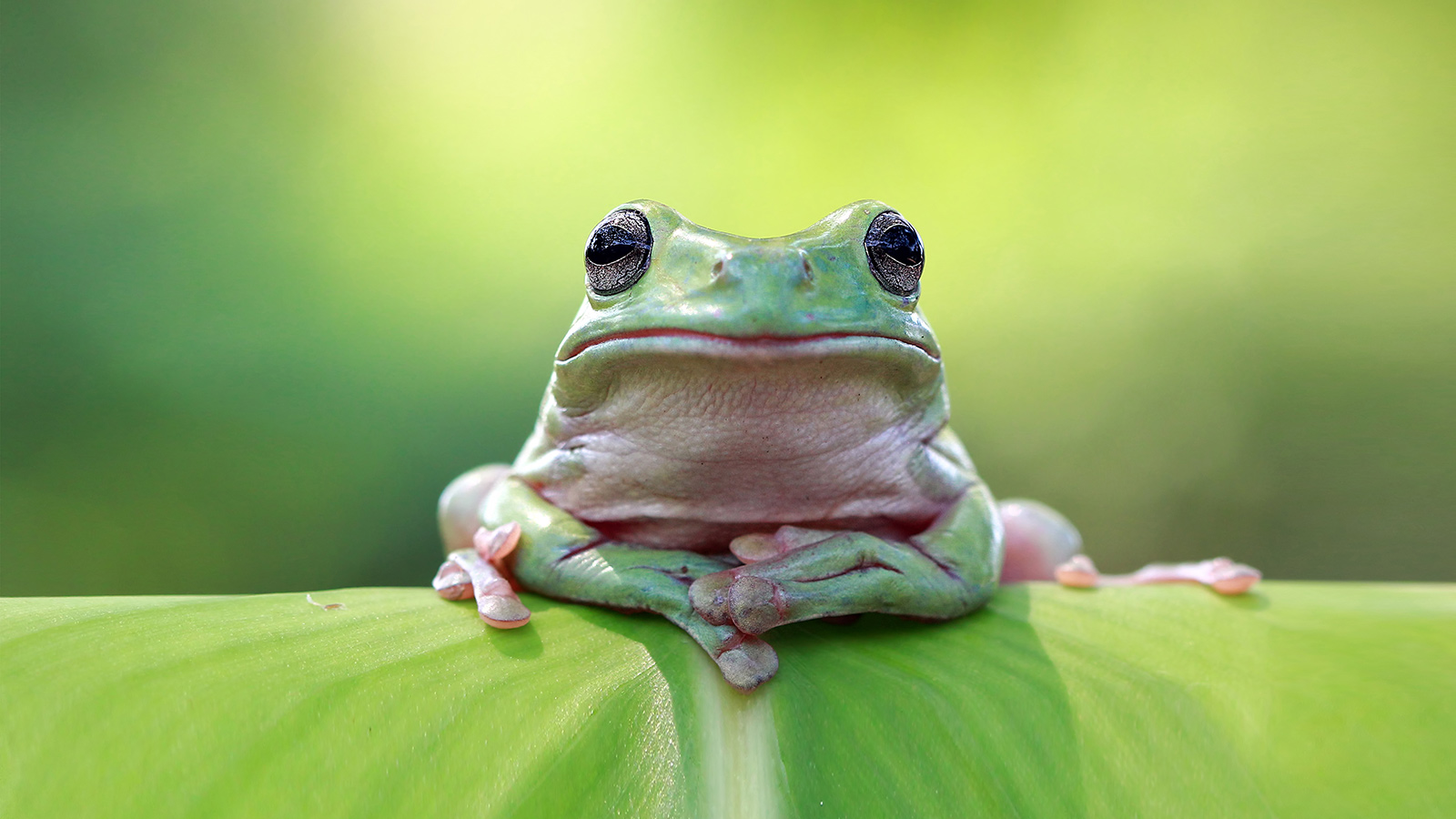Have you heard the news? In our relatively short time on this little blue dot, humankind has managed to put 1 million species at risk. Way to go, idiots.
On Monday, the U.N. came out with another majorly depressing assessment (see previous depressing assessment: climate change is going to kill us all). And this time, it’s on biodiversity.
Hundreds of experts from around the world looked at thousands of scientific studies and found that the speed with which we are fucking up the natural world is “unprecedented,” and wrote it all up in a 1,500-page report. The authors looked at what will happen if we continue polluting, clearing forests for agricultural purposes, expanding cities and roads, overhunting, overfishing, mucking up water resources, and spreading invasive species.
The report shows that we’re not just on the precipice of an extinction crisis; it’s already unfolding around us. Here are the scariest takeaways from the summary of the report’s findings (the full report isn’t coming out until later this year):
- 40 percent of amphibian species (frogs, toads, salamanders, newts — basically all the creatures 6-year-olds love to look at) could be wiped out.
- Marine mammals and corals (the kind that form reefs) aren’t in much better shape: one-third of those aquatic species are threatened.
- Even the daintiest of God’s creations, like ferns (and their relatives) and dragonflies, aren’t safe from humans. About 10 percent of each category could be wiped out.
- Nearly 40 percent of conifers, a category that includes Douglas-firs, cedars, and juniper trees, are under threat. That doesn’t bode well for lovers of Christmas trees.
- But Christian-Italians can breathe easy: of the 2,390 bony fishes species assessed, only around 10 percent are threatened. The Feast of the Seven Fishes is safe, for now.

IPBES. Sorry, cycad fans.
Which portions of the world are to blame for the global loss of biodiversity? Glad you asked. Much like the issue of climate change, the folks who are going to suffer (or are already suffering) from rapid extinctions are not the people who contributed the most to causing the problem.
High-income regions of the world use the most fertilizer, have the highest rates of domestic material consumption and gross domestic product per capita, and, of course, produce the most greenhouse gas emissions.
Compared to the high-income regions, low-income nations extract the least amount of living biomass, produce the least amount of emissions, use the least amount of fertilizer, and are doing the best job at protecting key biodiversity areas (often with the aid of international funds).
Here’s the cherry on top: The catastrophic problems of climate change and loss of biodiversity are occurring in tandem. Rising temperatures are only making it harder for Earth’s threatened plant and animal species to survive. If temperatures rise 2 degrees C (3.6 degrees F), around 5 percent of species worldwide could kick the can for climate-related reasons.
What’s worse, the report says that most governments aren’t sticking to the global pacts they made to protect the international environmental commons. See? Humans (particularly the wealthy ones) have a delightful tendency to make problems that snowball into bigger problems.
I don’t know about you, but I didn’t sign up for a world with a deficit of frogs and a surplus of bony fishes.



